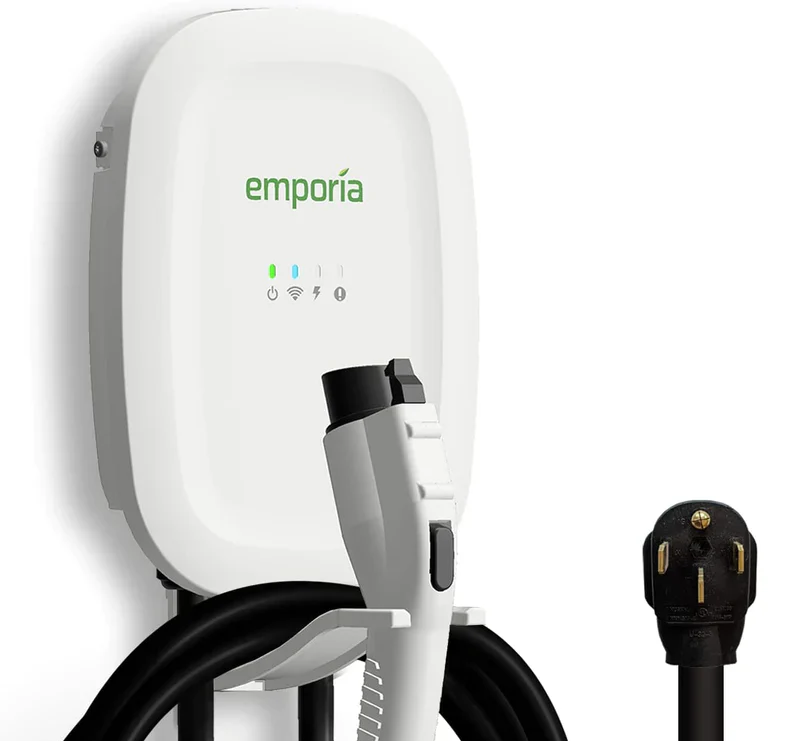Not everyone has a garage—and that shouldn’t stop anyone from owning or charging an electric vehicle (EV). If you park in a driveway, a carport, or even an outdoor lot, you can still charge your EV at home reliably, safely, and efficiently.
You just need to know what to look for.
Can You Charge an EV Outside?
Yes. Charging an electric vehicle outdoors is totally doable. In fact, the same technology used at public charging stations can be brought right to your curb, driveway, or backyard. Rain, snow, heat—none of it is a problem if your charger is built to handle it.
The key? Choose the right equipment and make sure it’s installed correctly.
Look for a NEMA 4 Rating
If you’re charging your EV outside, one term to remember is NEMA 4. That’s a standard set by the National Electrical Manufacturers Association to rate how well electrical enclosures (like EV chargers) handle exposure to the elements.
A NEMA 4-rated charger is:
- Sealed against wind, dust, and dirt
- Protected from rain, snow, and sleet
- Resistant to hose spray and splashing water
- Shielded from ice forming on the outside
In short, it’s built to survive the real world. That means you can mount your charger to the side of your house, a post near your parking space, or even on a fence—no garage necessary.
Cold Winters, Hot Summers? No Problem
If you live somewhere with freezing winters or blazing summers, your charger needs to keep up. Look for units rated to operate safely in a wide range of temperatures.
For example, the Emporia Level 2 EV Charger (48 amps) is weather-resistant and built to perform outdoors, even in extreme conditions—from frigid cold to desert heat. It’s a powerful and affordable choice for anyone setting up an outdoor EV charging solution.
Emporia 48 Amp level 2 EV Charger
Simplify your home EV charging experience with the Emporia 48 Amp level 2 EV Charger. Offering fast charging capabilities and a user-friendly mobile app, this charger ensures your electric vehicle is always charged and ready. Adjustable amperage simplifies installation and maximizes charging speed from your home’s existing electrical.
Do You Need an Electrician?
Maybe. It depends on your setup. A Level 2 charger runs on a 240-volt outlet—typically a NEMA 14-50 or NEMA 6-50 plug. If you don’t already have one near your parking area, you’ll need to have one installed.
An electrician can:
- Run a dedicated circuit from your panel
- Install a weather-rated outlet or hardwire the charger
- Ensure everything’s up to code and safe
It’s a one-time investment that pays off in daily convenience—and helps you avoid relying on slow public chargers or extension cords (never a good idea with EVs).
Tips for Charging Without a Garage
- Mount your charger somewhere accessible but protected from accidental bumps
- Use a lockbox or bracket if theft is a concern
- Avoid long cords or daisy-chaining through windows or doors
- Use your charger’s scheduling features to charge during off-peak hours and save on electricity
Final Thoughts
Not having a garage doesn’t mean you can’t charge your EV at home. It just means thinking smart about where and how you install your charger.
A weather-rated Level 2 charger—like the Emporia 48-amp unit—is more than capable of handling year-round conditions. Once it's in place, charging at home becomes as easy as plugging in your phone.
No garage? No problem.


